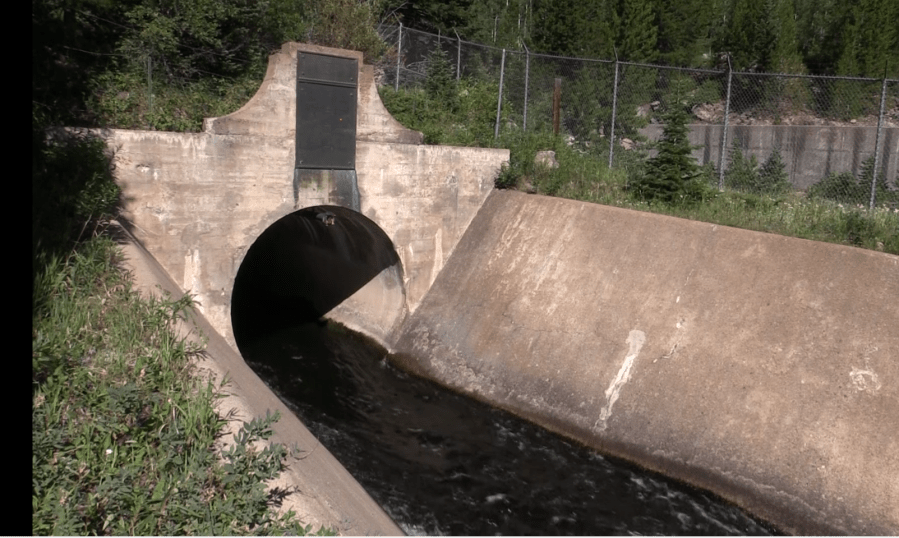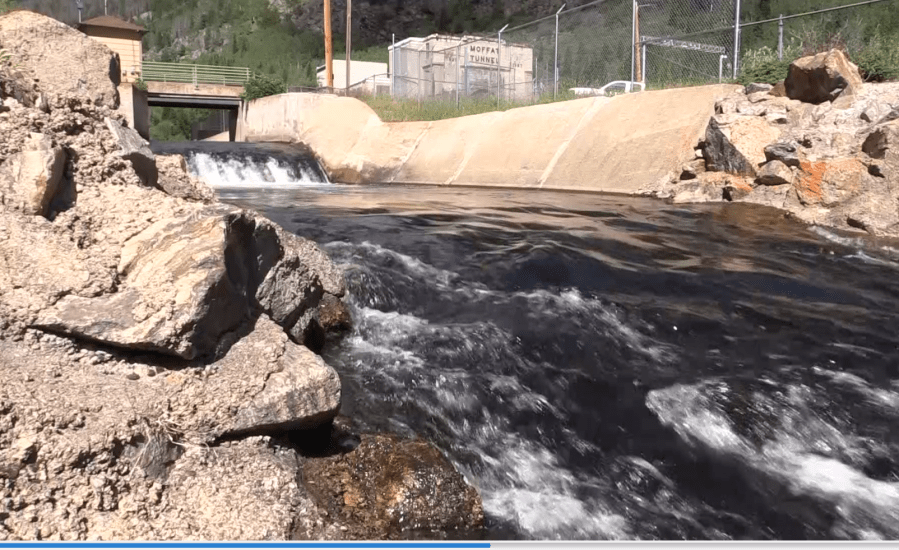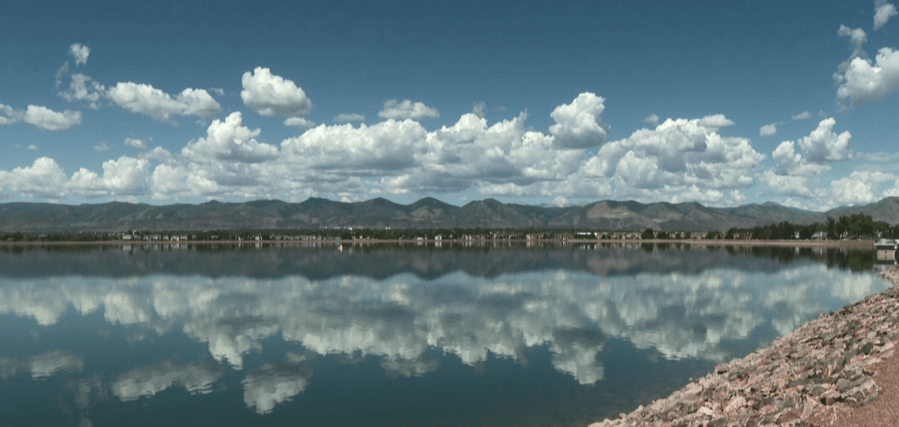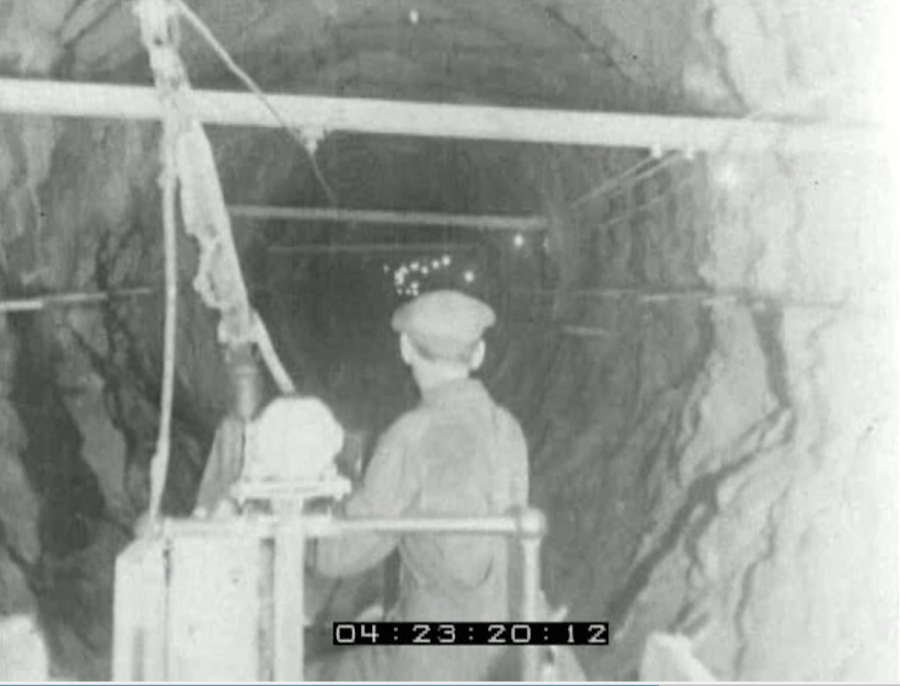DENVER (KDVR) — Deep in the Never Summer Mountains in Rocky Mountain National Park, a trickle of a stream carves its way south and then west below Grand Lake.
The tiny creek, called the Colorado River, begins at La Poudre Pass at 10,184 feet above sea level and gains strength from several small and large tributaries including the Blue, Eagle and Roaring Fork rivers as it flows west across the state.
Water collection
Denver Water, which provides water to 1.5 million people in the metro area, pulls half of its water from tributaries connected to the Colorado River.
The water district uses an elaborate system that collects snow and rain across 4,000 square miles then moves it through pipes, tunnels and ditches snaking through the mountains and west foothills before reaching Denver faucets.
“The journey of water is quite something,” said Todd Hartman with Denver Water. “Water molecules in this reservoir come from both sides of the Continental Divide.”

The maze of a collection system, which began in the early 1900s when Cheesman Dam was built, focuses on Colorado’s mountains since that is where most of the state’s precipitation falls.

“That supply is critical to the city and its residents,” said Hartman.
More than two dozen tunnels carry the water collected from Grand County streams and funnel it under the Continental Divide to reservoirs for storage before flowing into metro area treatment plants.
In an average year, the utility captures 94 billion gallons of water, enough to fill up nearly 157 Empower Fields at Mile High according to Denver Water. But year after year, water levels in Colorado have dropped with the flow declining 20% since the 1900s, according to water data.
“There’s no question that there’s a crisis on the Colorado River,” said Hartman. “That crisis is already impacting the amount of water that ends up in the Mile High City.
Denver Water reservoir storage
Currently, Denver Water’s reservoirs range from 65% to full, prompting the state’s largest water district to plan for the future.
“We’re absolutely planning ahead and looking at what we might have to do,” Hartman said.
While Denver Water users are in great shape compared to residents in the southwest, Hartman warned water conservation here is critical.
“Turn your sprinkler off. Water less. They are small things, but if you multiply them they add up to major actions,” said Hartman.
Cities across the state, not only Aurora, could soon consider grass bans according to Andy Mueller, general manager of the Colorado River District which helps manage water on the Western Slope.
“When you water your grass in Denver or northeastern Colorado, in any town, chances are you are watering it from the Colorado River. That’s really important to understand,” said Mueller. “But our own personal lawn, yards, all that nonfunctioning turf on mediums, at banks and commercial businesses like ours, it’s gotta go. We just don’t have the water.”
The Colorado River District will remove the grass lawn surrounding its office in Glenwood Springs which sits on the bank of the river.
“Everybody is going to have to work together to find ways to reduce their water use,” said Hartman.

Colorado’s water plan
Last week, the federal government took action to protect the sustainability of the Colorado River System, which feeds Lake Powell and Lake Mead, telling the seven states in the upper and lower basins to plan for additional water conservation efforts.
The Bureau of Reclamation also released the Colorado River Basin August 2022 24-Month Study, which sets the annual operations for the reservoirs.

Colorado’s water plan outlines how the state will deal with future water shortages. The water plan is now open for public comment as Colorado’s Water Conservation Board considers the state’s water woes and what to do.
The state’s plan considers scenarios to identify and assess potential water uncertainties and identifies possible actions to prevent future water shortages.
Some of the drivers that influence Colorado’s water future include population growth, urban land use, water efficiency technologies and climate change or water supply availability. CWCB maintains they are planning steps that can help mitigate risk no matter what the future holds.
Public comment on the proposal is open through Sept. 30, 2022.
For more information on how to take action, visit the Colorado Water Conservation Board’s website.
For more coverage of this story, visit our Colorado River Crisis coverage page.


